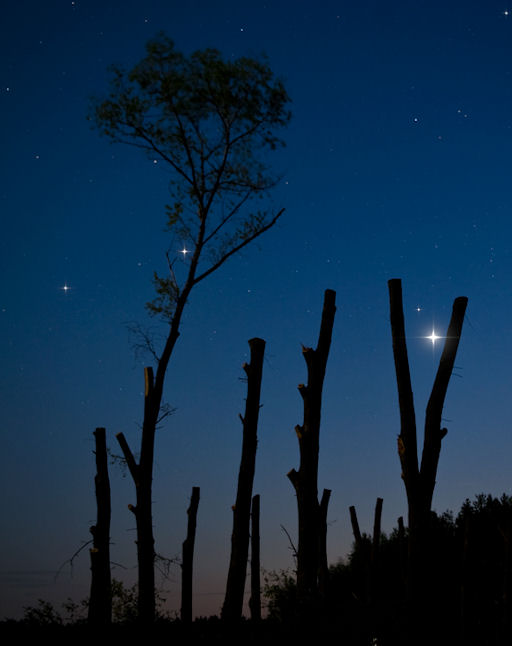PERIGEE "SUPER MOON" ON MAY 5-6: Get ready for moonlight! The full Moon of May 5-6, 2012, is a perigee moon, as much as 14% bigger and 30% brighter than other full moons of 2012. [video] [full story]
VENUS IS NOT ALONE: When the sun sets tonight, go outside and look west. The Evening Star, Venus, is not alone. Second-magnitude star El Nath is less than a degree away. Marek Nikodem photographed the pair on May 2nd from the countryside near Niedźwiady, Poland:

The planet and the star are converging. At closest approach on May 6th, they will be 0.8 degrees apart, a gap so small you can hide it behind the outstreched tip of your index finger.
If you have a telescope, point it at Venus. The planet is at its brightest for all of 2012, and backyard optics easily resolve it into a 27% crescent. Swing over to El Nath for a different experience. The star, which lies 130 light years away, is a pinprick of light unresolved by the most powerful telescopes on Earth.